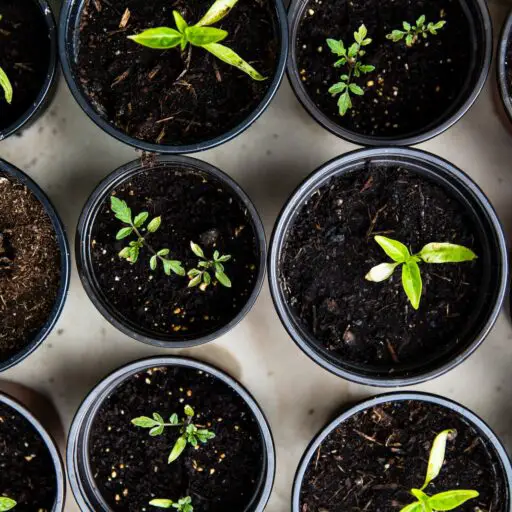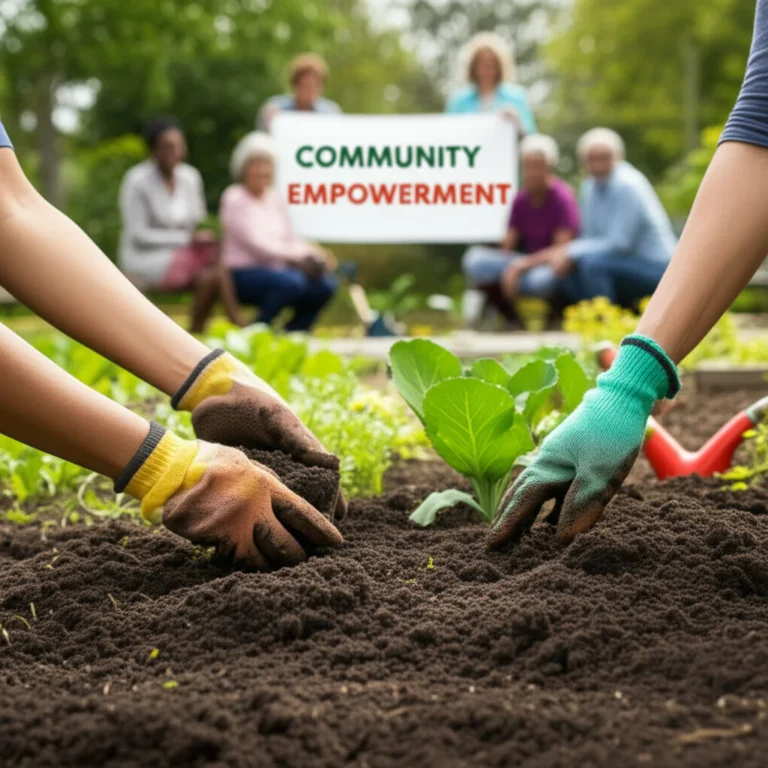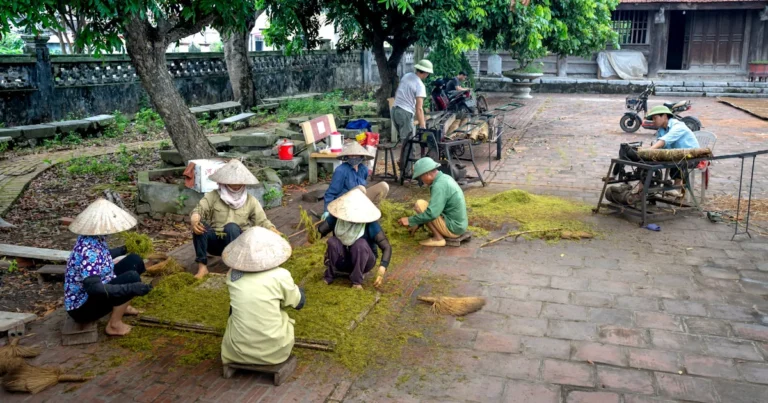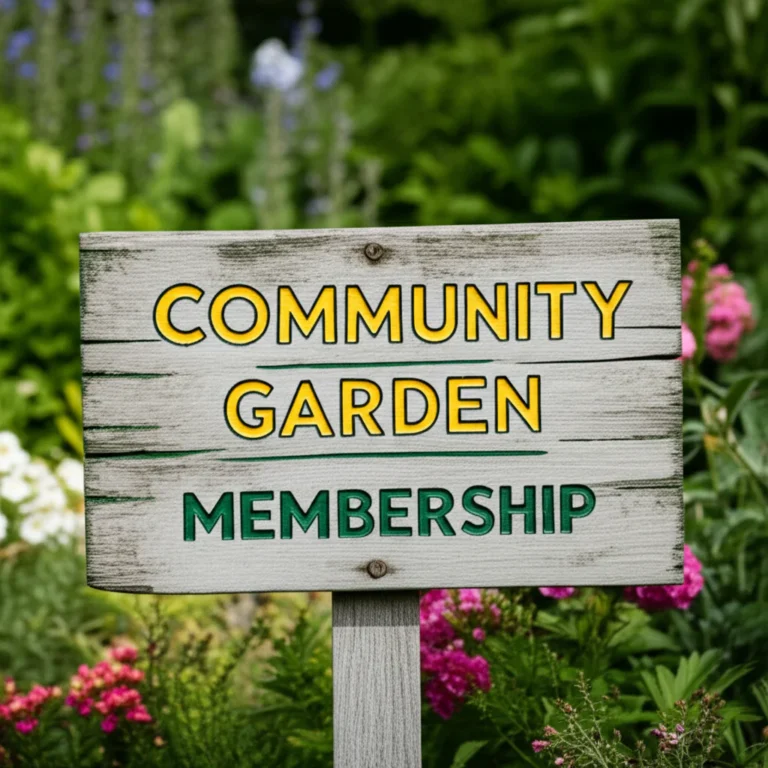Support our educational content for free when you purchase through links on our site. Learn more
Have you ever wondered what it really takes to keep a community garden thriving and harmonious? It’s not just about planting seeds and watering plants—there’s a whole ecosystem of rules and regulations working behind the scenes to ensure fairness, safety, and sustainability. From plot assignments to pest control, water usage to conflict resolution, these guidelines are the secret sauce that transforms a patch of dirt into a flourishing neighborhood oasis.
In this article, we’ll dig into the 14 essential rules every community gardener should know, backed by insights from our seasoned team at Community Gardening™. Curious about how to handle pesky pests organically? Or what happens if a neighbor’s pumpkin vine starts creeping into your plot? We’ve got you covered. Plus, we’ll share expert tips on crafting bylaws, managing shared tools, and even making your garden accessible for all. Ready to grow together? Let’s get started!
Key Takeaways
- Community garden rules create fairness, safety, and sustainability for all members, protecting both plants and people.
- Active plot maintenance and organic pest management are non-negotiable to keep the garden healthy and thriving.
- Clear conflict resolution processes and communication help maintain harmony among diverse gardeners.
- Volunteer hours and membership fees support shared resources like water, tools, and infrastructure.
- Accessibility and inclusivity are increasingly prioritized to welcome gardeners of all abilities.
- Enforcement is fair and graduated, focusing on education before penalties.
Looking to gear up for your gardening adventure? Check out these trusted tools:
- Fiskars Ergo Trowel: Amazon | Walmart
- Nisaku Hori-Hori Weeding Knife: Amazon | Nisaku Official Website
Table of Contents
- 🌱 Welcome to the Green Zone: Understanding Community Garden Rules
- ⚡️ Quick Tips and Facts for Aspiring Gardeners
- 📜 The Roots of Regulation: Why Community Gardens Need a Guiding Hand
- ⚖️ Navigating the Legal Landscape: Permits, Zoning, and Local Ordinances
- 📝 Crafting Your Garden’s Constitution: Developing Effective Bylaws and Agreements
- 🌿 The Core Commandments: Essential Rules and Regulations for Your Plot
- Plot Assignment & Usage: Your Patch, Your Responsibility
- Garden Maintenance & Upkeep: Keeping It Tidy and Thriving
- Pest & Disease Management: Battling Bugs the Community Way
- Water Usage Wisdom: Conserving Our Precious Resource
- Composting & Waste Management: Turning Trash into Treasure
- Harvesting & Sharing: The Bounty of the Garden
- Conduct & Conflict Resolution: Cultivating Harmony Among Gardeners
- Membership & Fees: Investing in Our Shared Green Space
- Garden Hours & Access: When Can You Dig In?
- Tool & Equipment Use: Sharing is Caring (and Cleaning!)
- Prohibited Items & Activities: What’s a No-Go in Our Garden?
- Safety & Liability: Keeping Everyone Safe and Sound
- Communication & Meetings: Sowing Seeds of Understanding
- Succession Planning & Vacating Plots: Passing the Trowel
- 👮 Enforcement & Fair Play: Upholding Garden Guidelines with Grace
- 🤝 The Art of Conflict Resolution: Keeping the Peace in Your Patch
- 🌍 Beyond the Plot: Community Engagement and Shared Responsibilities
- ♻️ Sustainable Practices: Rules for a Greener, More Resilient Garden
- 💰 Financial Frameworks: Understanding Fees, Dues, and Funding Rules
- ♿ Ensuring Accessibility: Rules for Inclusive Gardening for All
- 📚 Resources for Rule-Makers: Templates, Guides, and Expert Advice
- 💬 Connecting with Fellow Gardeners: Building a Thriving Community Network
- 🏡 Your Garden, Your Legacy: Sustaining Community Green Spaces for Generations
- 🎉 Conclusion: Cultivating Harmony, One Rule at a Time
- 🔗 Recommended Links: Digging Deeper for Garden Success
- ❓ FAQ: Your Burning Garden Rule Questions Answered
- 📖 Reference Links: Our Sources for Sowing Knowledge
Here is the main body of the article, crafted by the expert team at Community Gardening™.
🌱 Welcome to the Green Zone: Understanding Community Garden Rules
Hey there, fellow earth-movers and sun-worshippers! Welcome to the Community Gardening™ blog, where we dig deep into the soil and the soul of gardening together. So, you’re thinking about joining a community garden? Fantastic! It’s a world of fresh veggies, new friends, and the quiet satisfaction of watching something grow. But before you grab your trowel and sprint to the nearest open plot, let’s talk about something a little less glamorous but a lot more important: the rules.
“Rules? In a garden?” we hear you cry. “Isn’t it supposed to be a free-spirited, return-to-nature kind of thing?” Well, yes and no. Think of a community garden less like a wild meadow and more like a beautifully orchestrated symphony. Every musician needs to follow the same sheet music for the piece to sound harmonious. Garden rules are that sheet music. They ensure fairness, safety, and productivity, turning a potential patch of chaos into a thriving oasis for everyone.
⚡️ Quick Tips and Facts for Aspiring Gardeners
In a hurry to get your hands dirty? Here’s the dirt, distilled for you:
- It’s a Shared Space: The golden rule is to remember you’re not gardening in a vacuum. Your actions—or inactions—affect your neighbors. Understanding how a community garden works is the first step to being a great garden citizen.
- Read the Agreement: Before you pay a dime or plant a seed, read your garden’s membership agreement and bylaws. This document is your guide to everything from plot fees to pest control.
- Maintenance is Key: The most common rule? Keep your plot and the paths around it tidy and weed-free. As the City of Portland’s policies state, even when not actively gardening, plots require maintenance like removing weeds and dead plants.
- Organic is Often Law: Most community gardens, like those in Portland, mandate organic gardening practices. This means no synthetic pesticides or fertilizers. The health of the entire garden depends on it!
- Volunteer Hours are Common: Be prepared to contribute to the whole garden, not just your plot. Many gardens, like the City of Bellingham’s, require a set number of volunteer hours (they ask for 5 annually) for tasks like mowing, tool maintenance, or compost turning.
- Communication is Crucial: Don’t be a ghost gardener! Attend meetings, read the bulletin board, and get to know your fellow gardeners. It’s the best way to stay informed and build a strong community.
- Respect the Tools: If your garden has shared tools, clean them after use and return them promptly. A muddy shovel left in the rain helps no one.
📜 The Roots of Regulation: Why Community Gardens Need a Guiding Hand
Let’s be honest, the word “regulation” doesn’t exactly scream “fun.” It sounds like paperwork and red tape. But in a community garden, rules are the silent heroes, the sturdy trellis that supports the entire vine. Without them, one person’s passion project could become everyone else’s nightmare.
Imagine this: one gardener decides to plant super-invasive mint (we’ve all been tempted!), and soon it’s staging a hostile takeover of the three adjacent plots. Another gardener, with the best of intentions, uses a powerful chemical pesticide that drifts over and wipes out their neighbor’s organic kale and the local bee population. A third gardener simply stops showing up, and their plot becomes a weed-infested eyesore that spreads seeds all over the garden.
See? Chaos!
The Honolulu Recreational Community Gardening Program puts it beautifully, stating their mission is to “foster community connections, and support neighborhood volunteers who act as stewards of these gardens.” Stewardship is the key word. Rules aren’t about restriction; they’re about creating a framework for successful, respectful, and collective stewardship of a shared green space. They protect the plants, the people, and the very spirit of community.
⚖️ Navigating the Legal Landscape: Permits, Zoning, and Local Ordinances
Before a single shovel can break ground, a community garden itself has to follow a set of rules laid down by the local municipality. If you’re starting a new garden, this is your first hurdle. If you’re joining an existing one, these are the foundational laws that shape your garden’s policies.
- Zoning Laws: Is the land zoned for agricultural use? Most cities have specific zoning codes. Sometimes, a “special use permit” is required to operate a garden in a residential or commercial zone.
- Water Access: The garden needs a legal way to access water. This often involves a permit and a commercial water account with the city’s utility department.
- Liability and Insurance: This is a big one. What happens if someone gets hurt? Most gardens operating on public land, like those in the Portland Parks & Recreation program, are covered by the city’s insurance, but gardeners often have to sign a waiver indemnifying the city from liability. Independent gardens absolutely need their own liability insurance policy.
- Structures: Want to build a shed, a greenhouse, or a fancy raised bed? Hold your horses! Municipalities and garden policies have rules about the size, materials, and placement of structures. The City of Bellingham, for example, requires written pre-approval for any structure and states that nothing can be over 6 feet tall.
Navigating this can be tricky, but organizations like the American Community Gardening Association offer fantastic resources to help new gardens get started on the right legal foot.
📝 Crafting Your Garden’s Constitution: Developing Effective Bylaws and Agreements
Every successful community garden runs on a clear, comprehensive set of bylaws or a membership agreement. This is the “constitution” we mentioned earlier, and it’s a living document that every member agrees to uphold. It’s the ultimate resource for our internal Community Garden Policies.
Here at Community Gardening™, we’ve helped dozens of gardens draft their founding documents. The key is to be thorough, clear, and fair.
Key Components of a Garden Agreement:
- Membership & Plot Fees: How much does it cost, when is it due, and what does it cover?
- Plot Assignment & Forfeiture: How are plots assigned (lottery, waitlist)? What happens if a gardener abandons their plot?
- Gardener Responsibilities: This is the meat of the document, covering maintenance, watering, weeding, etc.
- Garden-Wide Rules: Policies on organic practices, shared tools, children, pets, and common areas.
- Conflict Resolution Process: A clear, step-by-step process for what to do when disagreements arise.
- Liability Waiver: A clause where the gardener acknowledges the risks and agrees not to hold the garden organization responsible for accidents.
Pro Tip: Don’t reinvent the wheel! Look for templates from university extension programs or other successful gardens in your area. The most effective bylaws are often developed with input from the gardeners themselves. Host a meeting, gather feedback, and create a document that reflects your specific community’s values.
🌿 The Core Commandments: Essential Rules and Regulations for Your Plot
Alright, let’s get down to the nitty-gritty. While every garden has its own unique flavor, there are some near-universal rules you’ll find everywhere. We’ve compiled the 14 most common and crucial regulations you need to know.
1. Plot Assignment & Usage: Your Patch, Your Responsibility
This rule covers how you get your plot and what you can (and can’t) do with it.
- ✅ Usage: Plots are for personal, non-commercial gardening. You’re growing for yourself, your family, or to share—not to sell at a farmer’s market.
- ❌ Subletting: You almost never have the right to sublet or reassign your plot to someone else. The City of Bellingham’s rules are very clear: “Subletting or reassigning plots is not allowed.” If you can’t manage your plot, you must return it to the garden leadership for reassignment from the official waitlist.
- ✅ Active Gardening: You have to actually use the plot! Most gardens have a deadline by which plots must be actively worked. Portland’s policy states that during the main season, plots must show “active use through preparation, planting, harvesting, weeding,” etc. If your plot sits empty, you’ll likely lose it.
2. Garden Maintenance & Upkeep: Keeping It Tidy and Thriving
This is, without a doubt, the #1 source of conflict in community gardens. One person’s “charming wildflower meadow” is another’s “noxious weed infestation.”
- Your Plot: You are responsible for keeping your plot free of weeds, diseased plants, and trash. This isn’t just about looks; it prevents the spread of pests and diseases to your neighbors’ plots.
- The Pathways: Your responsibility doesn’t end at your plot’s border! As Portland’s rules specify, “Gardeners are responsible for maintaining paths and fence lines adjacent to their plots.” This usually means keeping the path halfway to your neighbor’s plot clear, level, and weed-free.
- Seasonal Cleanup: Most gardens have mandatory spring and fall cleanups. By a certain date in fall (often late October), you’ll need to clear out dead plants to prevent pests from overwintering. The City of Bellingham requires fall cleanup by October 31st and encourages cover crops.
I remember a new gardener, bless his heart, who thought the dandelions in his plot were a beautiful groundcover. His neighbors, who were battling the fluffy seeds parachuting into their pristine lettuce beds, were less than thrilled. A gentle conversation and a quick lesson in weeding 101 solved the problem!
3. Pest & Disease Management: Battling Bugs the Community Way
Because your garden is a shared ecosystem, how you handle pests matters to everyone.
- ✅ Organic Only: This is a big one. The vast majority of community gardens strictly prohibit synthetic pesticides, herbicides, and fertilizers. This includes common products like Roundup or Sevin dust. Using them can get you kicked out of the garden, period.
- What’s Allowed? So how do you fight pests? You use integrated pest management (IPM) and organic-approved solutions. This includes:
- Hand-picking pests (like tomato hornworms).
- Using physical barriers like row covers.
- Encouraging beneficial insects like ladybugs.
- Using organic-approved sprays like neem oil, insecticidal soap, or products containing Bacillus thuringiensis (Bt).
- Check the Label: Not sure if a product is organic? The Organic Materials Review Institute (OMRI) is the gold standard. If a product has the OMRI-Listed® seal, you’re generally good to go. Portland’s policies specifically recommend checking the OMRI website.
| Pest Control Method | Community Garden Friendliness | Why? |
|---|---|---|
| Hand-picking Pests | ✅ Excellent | No chemicals, targets only the pest. |
| Neem Oil Spray | ✅ Good | Organic and effective, but can harm bees if sprayed on open flowers. Spray at dusk. |
| Beneficial Insects | ✅ Excellent | Nature’s own pest control! You can buy ladybugs or lacewings online. |
| Synthetic Pesticides (e.g., Sevin) | ❌ FORBIDDEN | Kills beneficial insects, can drift to other plots, contaminates the soil. |
| Synthetic Herbicides (e.g., Roundup) | ❌ FORBIDDEN | Highly toxic to many plants, persists in soil, major health concerns. |
4. Water Usage Wisdom: Conserving Our Precious Resource
Water is a shared, and often costly, resource. Water rules are all about conservation and courtesy.
- ❌ Don’t Leave Water Unattended: This is a cardinal sin. You must remain on-site while watering. A forgotten hose can flood plots and waste hundreds of gallons of water.
- ✅ Be Mindful of Others: If people are waiting to use the hose, be considerate. The City of Bellingham suggests limiting watering to 30 minutes when others are waiting.
- ❌ No Sprinklers or Drip Systems: Many gardens prohibit attaching personal, unattended watering systems like sprinklers or soaker hoses to the main spigots. This is to prevent water waste and ensure everyone has access.
- ✅ Water Wisely: Water the base of your plants, not the leaves, to prevent disease. Water deeply and less frequently to encourage strong roots. Mulching your plot heavily is the best way to conserve soil moisture.
5. Composting & Waste Management: Turning Trash into Treasure
Composting is the heart of a sustainable garden, but a poorly managed compost pile can be a stinky, pest-ridden mess.
- ✅ What to Compost: Only compost materials from the garden itself. This includes green materials (weeds that haven’t gone to seed, plant trimmings) and brown materials (dried leaves, straw).
- ❌ What NOT to Compost: This is crucial! Do not add:
- Diseased plants (they can spread the disease).
- Invasive weeds like bindweed or quackgrass (they’ll just re-sprout).
- Oily or cooked foods, meat, or dairy (these attract rodents and other pests).
- Pet waste.
- Trash from home. The City of Bellingham explicitly prohibits “household or yard waste from off-site.”
- Pack It In, Pack It Out: Your garden is not a dump. Any trash you bring in (plastic pots, snack wrappers, etc.) must go home with you.
6. Harvesting & Sharing: The Bounty of the Garden
This should be simple, but you’d be surprised.
- ✅ Harvest Only From Your Plot: It sounds obvious, but it needs to be said. Do not harvest anything from another gardener’s plot without their explicit, in-person permission. That one “extra” tomato might have been the one they were waiting all week to pick.
- Community Beds: Some gardens have designated “community beds” or “giving gardens” where anyone can harvest or the produce is donated to a local food bank. Know which beds are which!
- Keep it Clean: Harvest your produce regularly. Letting vegetables rot on the vine is a major attractant for pests and diseases. This is a key part of preventing rodent issues, as noted in Portland’s policies.
7. Conduct & Conflict Resolution: Cultivating Harmony Among Gardeners
A garden brings together people from all walks of life. A little courtesy goes a long way.
- Be a Good Neighbor: Keep your tools, conversations, and kids out of other people’s plots. Respect differing gardening styles (as long as they follow the rules!).
- Supervise Children: Children are welcome in most gardens, but they must be supervised by an adult at all times to ensure their safety and to prevent accidental trampling of precious seedlings.
- Pets: Policies vary widely here. Many gardens, like Bellingham’s, prohibit pets entirely (with exceptions for service animals) to prevent digging, “unwanted fertilizer,” and potential conflicts. Always check your garden’s specific rule.
- Conflict: What happens when there’s a problem? We’ll cover this more in our conflict resolution section, but the first step is always to try and talk to the other gardener directly, calmly, and politely.
8. Membership & Fees: Investing in Our Shared Green Space
Yes, there’s usually a fee to join. But where does that money go?
- What Fees Cover: Plot fees are not for profit. They are essential for covering the garden’s operating costs, which can include:
- Water bills
- Liability insurance
- Tools and equipment (hoses, wheelbarrows)
- Soil, compost, and mulch for common areas
- Shed or fence repairs
- Deadlines: Pay your fees on time! Missing a payment deadline is one of the fastest ways to lose your plot. Honolulu’s rules explicitly list “missed payments” as a reason for permit revocation.
9. Garden Hours & Access: When Can You Dig In?
Most gardens aren’t open 24/7. This is for the safety of the gardeners and the security of the garden.
- Typical Hours: A common rule is “dawn to dusk.” The City of Bellingham’s rules state, “Gardening activities must occur during daylight hours.”
- Gate Security: If your garden has a locked gate, you are responsible for locking it when you are the last person to leave. This prevents vandalism and theft.
10. Tool & Equipment Use: Sharing is Caring (and Cleaning!)
Shared tools are a huge perk! But they require a little extra responsibility.
- ✅ Clean and Return: This is the #1 rule of shared tools. Scrape the mud off shovels and hoes. Wipe down handles. Return the tool to its designated spot in the shed so the next person can find it.
- ❌ Don’t Hoard: Don’t take a community wheelbarrow home for the weekend. Shared tools should stay on-site and be used and returned efficiently.
- ✅ Report Broken Tools: If a shovel handle splinters or a hose springs a leak, don’t just put it back. Let your garden manager know so it can be repaired or replaced.
- Personal Tools: Clearly label any personal tools you bring to the garden with your name and plot number.
Looking to build your own toolkit? We recommend starting with a sturdy trowel, a hori-hori knife, and a good pair of gloves.
- Fiskars Ergo Trowel: Amazon | Walmart
- DeWalt Garden Tools: Amazon
- Nisaku Hori-Hori Weeding Knife: Amazon | Nisaku Official Website
11. Prohibited Items & Activities: What’s a No-Go in Our Garden?
To keep the garden safe and manageable, some things are simply not allowed.
- Banned Plants: Most gardens have a list of prohibited plants. This always includes aggressive, invasive species. The City of Bellingham specifically bans “woody plants, including trees, shrubs, and vines like grape, wisteria, and hops.” Tall plants like corn or sunflowers may also be restricted or have placement rules so they don’t shade neighboring plots. Check our list of Edible Plants for great, non-invasive ideas!
- Structures: As mentioned, you can’t just build whatever you want. Fencing, trellises, and raised beds usually need pre-approval and must be within your plot boundaries. Solid fences made of brick or stone are almost always forbidden.
- Other No-Gos: Common sense applies here. No alcohol or drug use, no loud music, no open fires.
12. Safety & Liability: Keeping Everyone Safe and Sound
Your safety is paramount.
- Emergency Contacts: Know who to call in an emergency. For crime or medical emergencies, call 911. For urgent garden issues (like a burst water main), have the garden manager’s number handy.
- Liability Waivers: You will almost certainly be required to sign a waiver acknowledging that you are gardening at your own risk. This is standard procedure and protects the volunteer-run organization from lawsuits.
- Hazards: Be aware of your surroundings. Watch out for trip hazards like hoses or tools left on paths. Report any unsafe conditions to the garden leadership immediately.
13. Communication & Meetings: Sowing Seeds of Understanding
Staying in the loop is part of being a good garden member.
- Check for Updates: Your garden will communicate through email, a physical bulletin board, or maybe a Facebook group. It’s your responsibility to check for updates. As Bellingham’s rules note, “Gardeners without email addresses are responsible for checking the bulletin board for updates.”
- Attend Meetings: Most gardens hold a few general meetings per year. These are crucial for getting important updates, voting on issues, and connecting with your fellow gardeners. It’s a great chance to participate in Community Garden Events.
14. Succession Planning & Vacating Plots: Passing the Trowel
Life happens! If you need to give up your plot, do it gracefully.
- Give Notice: Let your garden manager know as far in advance as possible so they can offer the plot to the next person on the waitlist.
- Leave it Clean: The golden rule of leaving a plot is to leave it in the condition you’d want to find it in. This means clearing out all your plants, weeds, tools, and any personal structures like stakes or small fences. A clean slate is the best gift you can give the next gardener.
👮 Enforcement & Fair Play: Upholding Garden Guidelines with Grace
So, what happens when someone breaks the rules? This can be the most uncomfortable part of community gardening, but a clear and fair enforcement process is essential. It’s not about being punitive; it’s about solving problems and protecting the garden for everyone.
Most gardens use a graduated enforcement system. It often looks something like this:
- The Friendly Reminder: The garden manager might leave a polite note on the plot or send a friendly email. “Hey, looks like the weeds are getting a little wild in your plot! Please take care of them by this weekend.”
- The Formal Warning: If the issue isn’t resolved, a more formal written warning is issued, citing the specific rule that was broken and giving a firm deadline for compliance.
- The Final Notice / Probation: If there’s still no action, a final notice is given. The Portland Parks program uses a system where a third reminder in a season can lead to a “trial period with a garden plan.” This is a last-ditch effort to help the gardener get back on track.
- Plot Forfeiture: If all else fails, the gardener’s membership is revoked, and the plot is reassigned. This is always the last resort, but it’s necessary to deal with truly abandoned or neglected plots. As Portland’s policy states, a fourth reminder in a year results in plot cancellation.
The key to good enforcement is consistency and fairness. The rules must apply to everyone equally, from the brand-new gardener to the seasoned veteran who’s been there for a decade.
🤝 The Art of Conflict Resolution: Keeping the Peace in Your Patch
Disagreements are inevitable when you have dozens of passionate people working in close quarters. A water-hogging neighbor, a shade-casting trellis, a path-creeping pumpkin vine—these small issues can grow into major disputes if not handled well.
Here’s our tried-and-true method for resolving garden squabbles:
- Cool Off First: Never approach someone when you’re angry. Take a walk, water your tomatoes, and take a few deep breaths.
- Talk Directly and Privately: Don’t gossip with other gardeners. Go directly to the person involved. Ask them, “Hey, do you have a minute to chat?” and find a quiet corner.
- Use “I” Statements: Instead of saying “Your corn is shading my entire plot!” (accusatory), try “I’m concerned that my sun-loving plants aren’t getting enough light, and I think the tall corn might be the reason. I’m wondering if we can find a solution together.”
- Listen to Their Perspective: Maybe they had no idea it was an issue. Maybe they have a reason for what they did. Hear them out.
- Seek a Mediator: If you can’t resolve it yourselves, it’s time to bring in a neutral third party—usually the garden manager or a member of the leadership committee. They can help facilitate a conversation and find a compromise that aligns with the garden’s rules.
Remember, the goal isn’t to “win” an argument; it’s to find a solution that allows everyone to enjoy the garden peacefully.
🌍 Beyond the Plot: Community Engagement and Shared Responsibilities
A thriving community garden is more than just a collection of individual plots. It’s a shared space that requires shared effort. This is where community service hours come in.
Most gardens require members to volunteer a certain number of hours per year for the common good. Portland requires 6 hours per year, while the City of Bellingham requires 5 hours.
What do these hours entail?
- Mowing or weed-whacking common paths.
- Turning the community compost piles.
- Helping with repairs to the shed, fences, or water lines.
- Organizing and cleaning the tool shed.
- Participating in garden-wide workdays to spread wood chips or compost.
- Tending to the “giving garden” plots that grow food for local charities.
These service hours are a critical part of the Benefits of Community Gardens. They build a sense of shared ownership, ensure the entire space is well-maintained, and provide a great opportunity to get to know your fellow gardeners.
♻️ Sustainable Practices: Rules for a Greener, More Resilient Garden
Modern community garden rules are increasingly focused on promoting sustainability and ecological health. These go beyond the basic “organic-only” rule.
- Water Conservation: Encouraging or requiring the use of mulch to reduce evaporation. Some gardens in arid climates might have stricter rules about watering times and methods.
- Soil Health: Prohibiting practices that degrade soil, like excessive tilling. Encouraging the use of cover crops in the off-season to prevent erosion and add nutrients.
- Biodiversity: Creating rules that encourage planting native species and pollinator-friendly flowers around the garden’s perimeter. Some gardens may even provide seeds for these plants.
- Waste Reduction: A strong emphasis on the “pack it in, pack it out” philosophy and robust composting programs to minimize what goes to the landfill.
These rules help ensure the garden is not just productive, but also a positive force for the local environment.
💰 Financial Frameworks: Understanding Fees, Dues, and Funding Rules
We touched on fees earlier, but it’s worth diving a bit deeper. A garden’s financial health is crucial for its long-term survival. The rules around money need to be transparent and clear.
- Fee Structure: Fees are usually annual. Some gardens might offer a reduced rate for low-income gardeners or in exchange for extra volunteer hours.
- Budget Transparency: A well-run garden will make its annual budget available to members. This shows everyone exactly where their fees are going and builds trust.
- Fundraising: If the garden needs a large purchase, like a new shed or a major delivery of soil, the rules should outline how fundraising is conducted. Can individual gardeners fundraise? Does it all have to go through the leadership committee?
- No Commercial Activity: This rule is nearly universal. Your plot is for personal use. The garden cannot be used as a home base for a landscaping business or a market farm. This is often a requirement tied to the garden’s insurance and non-profit status.
♿ Ensuring Accessibility: Rules for Inclusive Gardening for All
A community garden should be for the whole community. This means making it accessible to people of all ages and abilities.
- ADA Compliance: Gardens on public land, like Portland’s, must comply with the Americans with Disabilities Act (ADA). Their policy explicitly states, “The City will make reasonable modification to policies/procedures to ensure that people with disabilities have an equal opportunity to enjoy our programs.”
- Accessible Plots: This often involves creating raised garden beds that are wheelchair-accessible (taller, with space underneath). These plots are typically reserved for gardeners with mobility challenges.
- Pathways: Main pathways should be wide, level, and firm enough for wheelchairs or walkers to navigate safely.
- Inclusive Policies: Rules should be written in plain language and available in multiple languages if the community is diverse. The process for requesting accommodations should be clear and straightforward.
Great Garden Design Ideas can incorporate accessibility from the very beginning, ensuring everyone has a chance to get their hands in the dirt.
📚 Resources for Rule-Makers: Templates, Guides, and Expert Advice
Whether you’re starting a new garden or refining the rules of an existing one, you don’t have to go it alone. There are incredible resources available to guide you.
- American Community Gardening Association (ACGA): The ACGA is the mothership for community gardeners in the US. Their website has a wealth of information, including sample bylaws and best practices.
- University Extension Programs: Nearly every state’s land-grant university has an extension program with a Master Gardener service. They often provide free, locally-specific advice and resources for community gardens. A quick search for “[Your State] University Extension Community Garden” will yield fantastic results.
- Local Non-Profits: Many cities have non-profit organizations dedicated to urban agriculture and community gardening. These groups are an invaluable source of local knowledge and support.
💬 Connecting with Fellow Gardeners: Building a Thriving Community Network
The rules provide the structure, but the real magic of a community garden comes from the… well, the community! The rules should support, not stifle, this connection.
We’ve seen gardens thrive when they make space for community-building activities:
- Potlucks and Harvest Festivals: A perfect way to share the bounty and celebrate a successful season.
- Seed and Seedling Swaps: A great event at the beginning of the season to share resources and variety.
- Workshops: A seasoned gardener could lead a workshop on composting, or someone could teach a class on canning and preserving.
- A Simple Seating Area: Having a bench or a picnic table encourages people to linger, chat, and share tips. It turns a collection of plots into a neighborhood hub.
These activities transform a piece of land into a place of belonging, which is the ultimate goal.
🏡 Your Garden, Your Legacy: Sustaining Community Green Spaces for Generations
Finally, good rules are about looking to the future. A well-designed set of regulations ensures that the garden can outlive its founding members and continue to be a resource for generations to come.
This involves thinking about:
- Leadership Succession: How are new garden managers or committee members chosen and trained?
- Long-Term Planning: Does the garden have a 5-year or 10-year plan? Are you setting aside funds for major future expenses?
- Documenting History: Keeping records of what works, what doesn’t, and the decisions made along the way provides an invaluable guide for future leaders.
The rules you follow and help enforce today are the foundation for the gardeners of tomorrow. By being a responsible, engaged, and respectful member, you’re not just growing vegetables—you’re cultivating a legacy.
🎉 Conclusion: Cultivating Harmony, One Rule at a Time
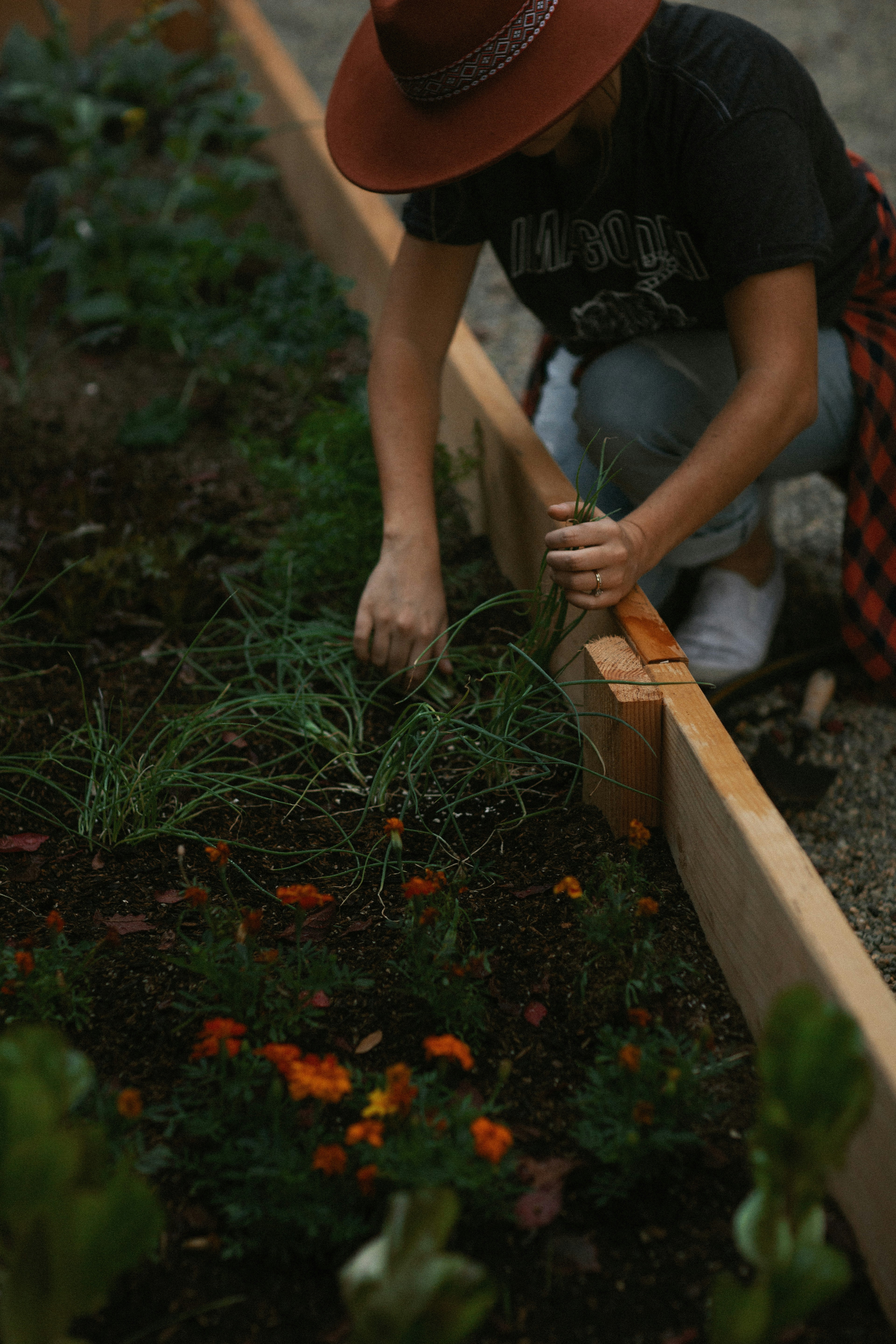
So, what have we uncovered on our journey through the tangled vines of community garden rules and regulations? Far from being a bureaucratic buzzkill, these guidelines are the unsung heroes that keep our shared green spaces flourishing, fair, and fun. They protect your plot from invasive plants, ensure water is used wisely, and foster a spirit of cooperation that turns a patch of dirt into a vibrant community.
Remember the question we teased earlier: why do we need rules in a place meant for freedom and growth? The answer is simple—rules create the fertile ground where community and nature can thrive together. They help gardeners coexist peacefully, keep pests and diseases at bay, and ensure that the garden remains a welcoming place for everyone, now and in the future.
If you’re ready to dig in, keep these commandments close to heart, engage with your fellow gardeners, and embrace the stewardship role you’re stepping into. Your plot isn’t just a piece of earth—it’s part of a living, breathing community legacy.
Happy gardening, and may your harvests be bountiful and your friendships deep-rooted!
🔗 Recommended Links: Digging Deeper for Garden Success
Ready to gear up or deepen your gardening know-how? Here are some top picks from Community Gardening™:
-
DeWalt Garden Tools Set:
Amazon -
Nisaku Hori-Hori Weeding Knife:
Amazon | Nisaku Official Website -
Books for Community Gardeners:
Dive in, equip yourself, and grow with confidence!
❓ FAQ: Your Burning Garden Rule Questions Answered

What are the benefits of participating in a community garden for individuals and the environment?
Community gardens offer a smorgasbord of benefits! For individuals, they provide access to fresh, nutritious produce, physical activity, and mental health boosts through connection with nature. Socially, they foster community bonds, reduce isolation, and encourage cultural exchange through shared gardening traditions.
Environmentally, community gardens improve urban biodiversity, reduce food miles (lowering carbon footprints), and promote sustainable practices like composting and organic pest control. They also help manage stormwater runoff and improve air quality.
Learn more about these benefits in our Benefits of Community Gardens section.
Read more about “How Can We Keep Community Gardens Sustainable? 10 Essential Practices to Thrive! 🌱”
How do I find and join a local community garden in my area, and what are the typical membership requirements?
Start by searching your city or county parks department website or local urban agriculture nonprofits. Websites like the American Community Gardening Association offer directories.
Typical membership requirements include:
- Filling out an application or joining a waitlist.
- Paying an annual plot fee.
- Agreeing to abide by the garden’s rules and bylaws.
- Committing to volunteer hours for garden upkeep.
- Attending orientation or meetings.
Always read the garden’s specific policies carefully. For example, Portland Parks & Recreation requires six volunteer hours annually and active plot maintenance.
What are some common community garden rules and regulations regarding plot maintenance, watering, and harvest sharing?
Common rules include:
- Plot Maintenance: Keep your plot and adjacent paths weed-free and tidy year-round. Remove dead plants and debris promptly.
- Watering: Water only during designated hours, never leave hoses unattended, and limit watering time when others are waiting.
- Harvest Sharing: Harvest only from your own plot unless the garden has designated communal beds. Sharing excess produce with neighbors is encouraged but not mandatory.
These rules ensure fairness, prevent pest outbreaks, and conserve resources.
Can community gardens be used for educational purposes, such as teaching children about sustainable gardening practices and nutrition?
Absolutely! Many community gardens serve as outdoor classrooms. They offer hands-on opportunities for children and adults to learn about:
- Organic gardening techniques.
- Composting and waste reduction.
- Pollinator-friendly planting.
- Nutrition and cooking with fresh produce.
Some gardens organize workshops, school field trips, and youth programs. Check your garden’s policies for specific guidelines on educational use and group activities.
How do community gardens handle conflicts between gardeners over plot boundaries or gardening practices?
Most gardens encourage gardeners to first try direct, respectful communication using “I” statements to express concerns. If that fails, a neutral mediator such as the garden manager or committee member steps in to facilitate resolution.
Clear conflict resolution procedures are often outlined in the garden’s bylaws to ensure fairness and maintain harmony.
Are pets allowed in community gardens?
Policies vary, but many community gardens prohibit pets to prevent damage, waste, and safety issues. Service animals on leashes are typically exempt. Always check your garden’s specific pet policy.
What happens if a gardener neglects their plot or fails to meet volunteer hour requirements?
Gardens typically have a graduated enforcement system:
- Friendly reminders.
- Formal warnings with deadlines.
- Probation or garden plans.
- Plot reassignment if issues persist.
This system helps maintain garden health and fairness for all members.
📖 Reference Links: Our Sources for Sowing Knowledge
- City of Bellingham Community Gardens Rules & Responsibilities
- Portland Parks & Recreation Community Garden Policies
- Honolulu Recreational Community Gardening Program
- American Community Gardening Association
- Organic Materials Review Institute (OMRI)
- Fiskars Official Website
- DeWalt Official Website
- Nisaku Official Website
These trusted sources helped us cultivate this comprehensive guide to community garden rules and regulations. Happy growing!
